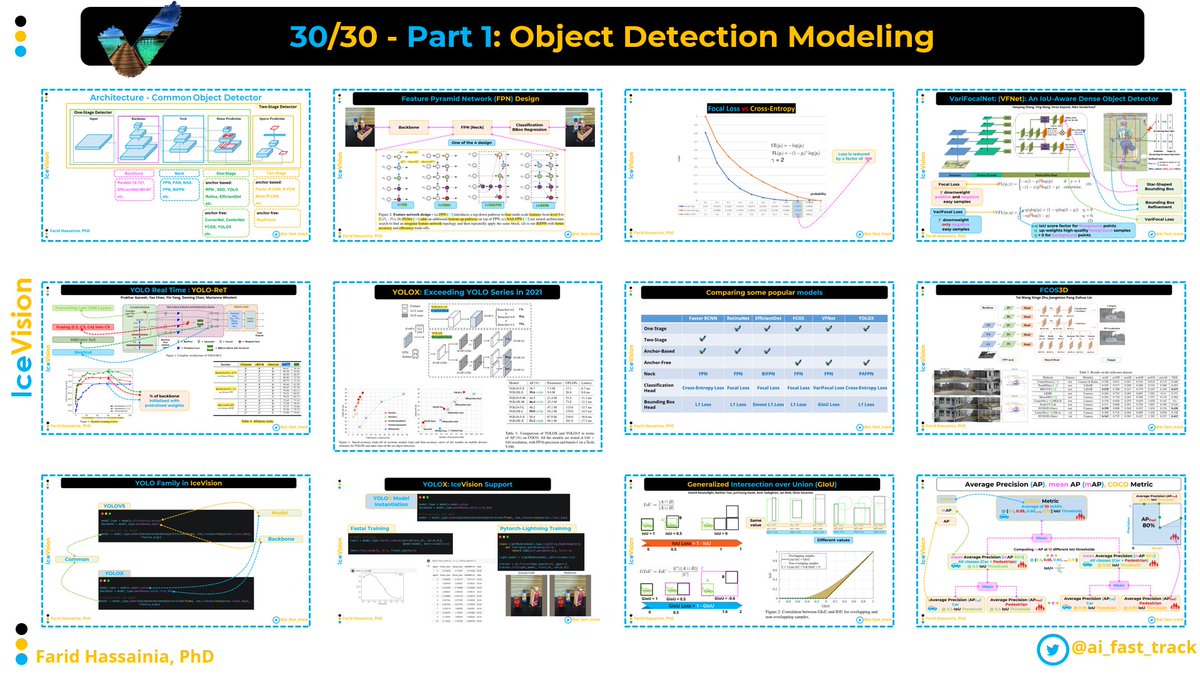Ankitsrihbti Authors AI Fast Track (48/50)
I gathered 12 visual summaries on OD Modeling 🎁
A lot of people find those posts helpful, follow @ai_fast_track to catch the upcoming posts, and give this tweet a quick retweet 🙏
Summary of summaries👇

1- Common Object Detector Architecture you should be familiar
\u2728Common Object Detector Architecture you should be familiar with:
— AI Fast Track (37/45) (@ai_fast_track) October 27, 2021
\U0001f4cc Common object detectors are divided into One-Stage Detectors (OSD), and Two-Stage Detectors (TSD)
\U0001f4cc Both OSD and TSD can be either anchor-based (relying on anchor boxes) or anchor-free pic.twitter.com/TGxS0IbE8g
2- Four Feature Pyramid Network (FPN) Designs you should
4 Feature Pyramid Network (FPN) Design you should know:
— AI Fast Track (37/45) (@ai_fast_track) November 15, 2021
FPN, PANet, NAS-FPN, and BiFPN
\U0001f4cc (a) FPN uses a top-down pathway to fuse multi-scale features from level 3 to 7 (P3 - P7);
\U0001f4cc (b) PANet adds an additional bottom-up pathway on top of FPN; pic.twitter.com/k22vo6Df4L
3- Seven things you should know about the Focal
\U0001f9d07 things you should know about the Focal Loss:
— AI Fast Track (37/45) (@ai_fast_track) October 25, 2021
\U0001f4cc It was introduced in the RetinaNet paper to address the foreground-background class imbalance encountered during training of dense detectors (one-stage detectors)
... pic.twitter.com/NaXzh80Etd
4- FCOS is the first anchor-free object detector that beat two-stage
FCOS is an an anchor-free object detector.
— AI Fast Track (37/45) (@ai_fast_track) November 20, 2021
It was one of first competitors of anchor-based single/two stage object detectors.
Understanding FCOS will help understanding other model inspired by FCOS.
Summary ...\U0001f447 pic.twitter.com/aPFJ0h1olz

